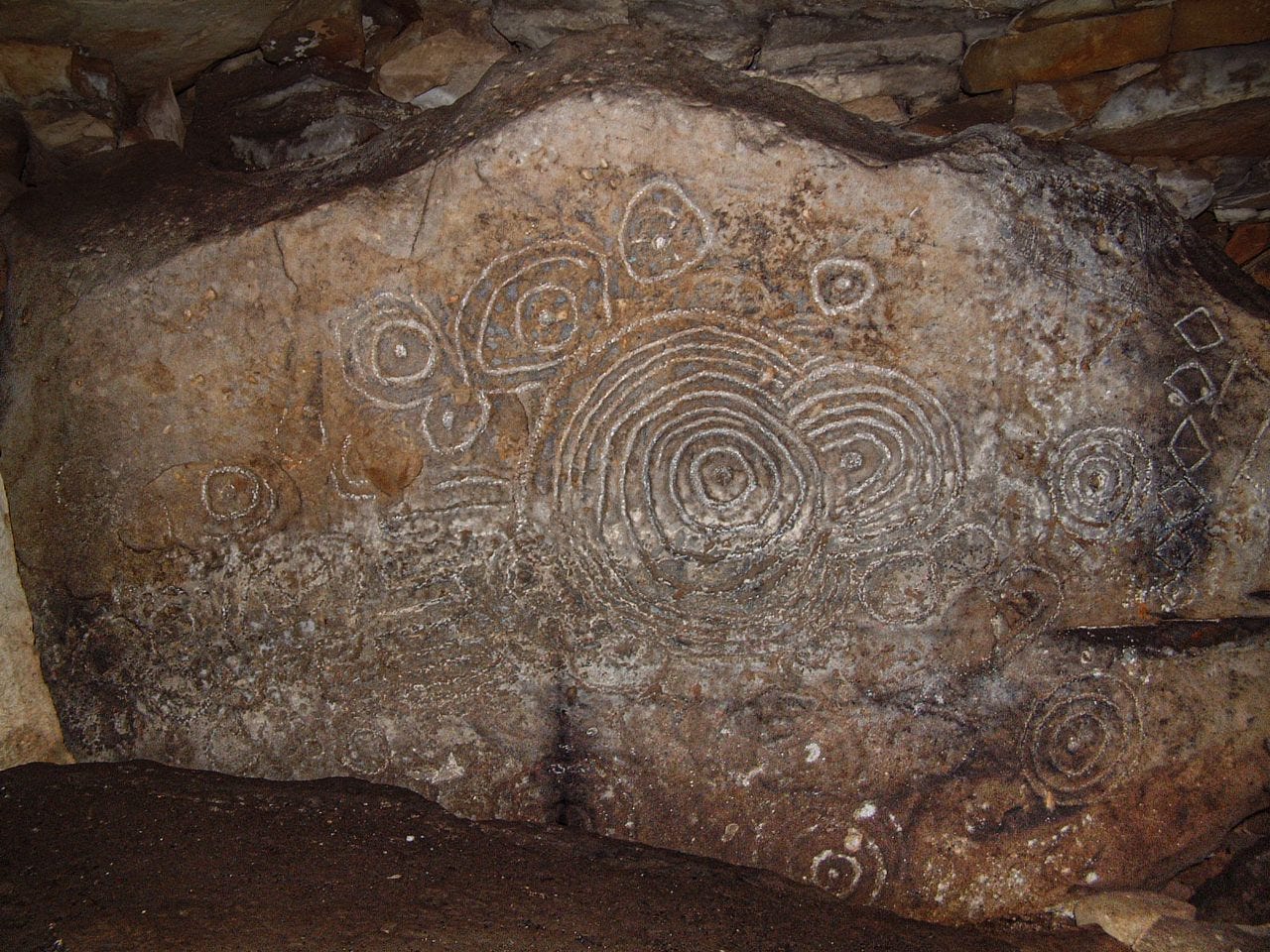Hello, lovely Celtic Creatives,
Today, in the spirit of this solar eclipse portal, I share a ritual for your Celtic Creatives Toolkit to start your day at sunset. But before I do, below you’ll see a photo of a +5,000-year-old carved stone in Cairn L on Sliabh na Calliagh, the Cailleach or ‘Witch’s Mountain’ at Loughcrew in Ireland. How wondrous are these mysterious carvings? Some say together these symbols conjure the world’s earliest known recording of a solar eclipse. This is hotly debated by scholars but sure it’s an excuse to share rare and exquisite Megalithic art.
Now on to the ritual… This is a practice that I love to do but often don’t get the opportunity. I have two young boys, 4 and 8 years old. My littlest fella still falls asleep in our bed at night before being moved to his own room, and from there in a drunken slumber, will often home himself back under the parental duvet. Space in the evening is challenging for me, to compensate I tend to rise early, I’m a cockcrow kind of person anyway. However, whenever I can, I relish in starting my day at sunset.
We tend to think of time as scientific fact but time is also cultural, an expression of a peoples and how they relate to the world around them. Ireland’s landscape is dense in sacred places that reflect the polarities between dark and light. The raven dark of ritual chambers like the temples at Brú na Bóinne, whose passages flood with light during the great solar turnings of the year. A megalithic cervix opening its womb to the world inviting renewal and rebirth.
As chief pontiff of Rome, Julius Caesar said of the Gauls, the Celts of mainland Europe, that they called themselves “Sons of the God of Night” and that they followed:1
“The division of every season, not by the number of days, but of nights; their birthdays and the beginning of months and years they observe in such order that day follows night”.
Classical commentary (although often unreliable), along with archaeological evidence like the 1st century lunisolar Coligny Calendar, wisdom gleaned from Celtic mythology and folklore, Irish cultural traditions, and the Gaelic agricultural seasons, indicate that dark preceded light in how our ancestors perceived time. We see this in the modern interpretation of the “Celtic Year”, the dark half begins in Samhain, the Gaelic word for November until the seasons spiral towards the light half of the year at Bealtaine, the Irish word for May. This is where we are now:





